Abstract
Demographic estimation techniques suggest that worldwide about 50 million deaths occur each year, of which about 39 million are in the developing countries. In countries with adequate registration of vital statistics, the age at death and the cause can be reliably determined. Only about 30-35% of all deaths are captured by vital registration (excluding sample registration schemes); for the remainder, cause-of-death estimation procedures are required. Indirect methods which model the cause-of-death structure as a function of the level of mortality can provide reasonable estimates for broad cause-of-death groups. Such methods are generally unreliable for more specific causes. In this case, estimates can be constructed from community-level mortality surveillance systems or from epidemiological evidence on specific diseases. Some check on the plausibility of the estimates is possible in view of the hierarchical structure of cause-of-death lists and the well-known age-specific patterns of diseases and injuries. The results of applying these methods to estimate the cause of death for over 120 diseases or injuries, by age, sex and region, are described. The estimates have been derived in order to calculate the years of life lost due to premature death, one of the two components of overall disability-adjusted life years (DALYs) calculated for the 1993 World development report. Previous attempts at cause-of-death estimation have been limited to a few diseases only, with little age-specific detail. The estimates reported in detail here should serve as a useful reference for further public health research to support the determination of health sector priorities.
Full text
PDF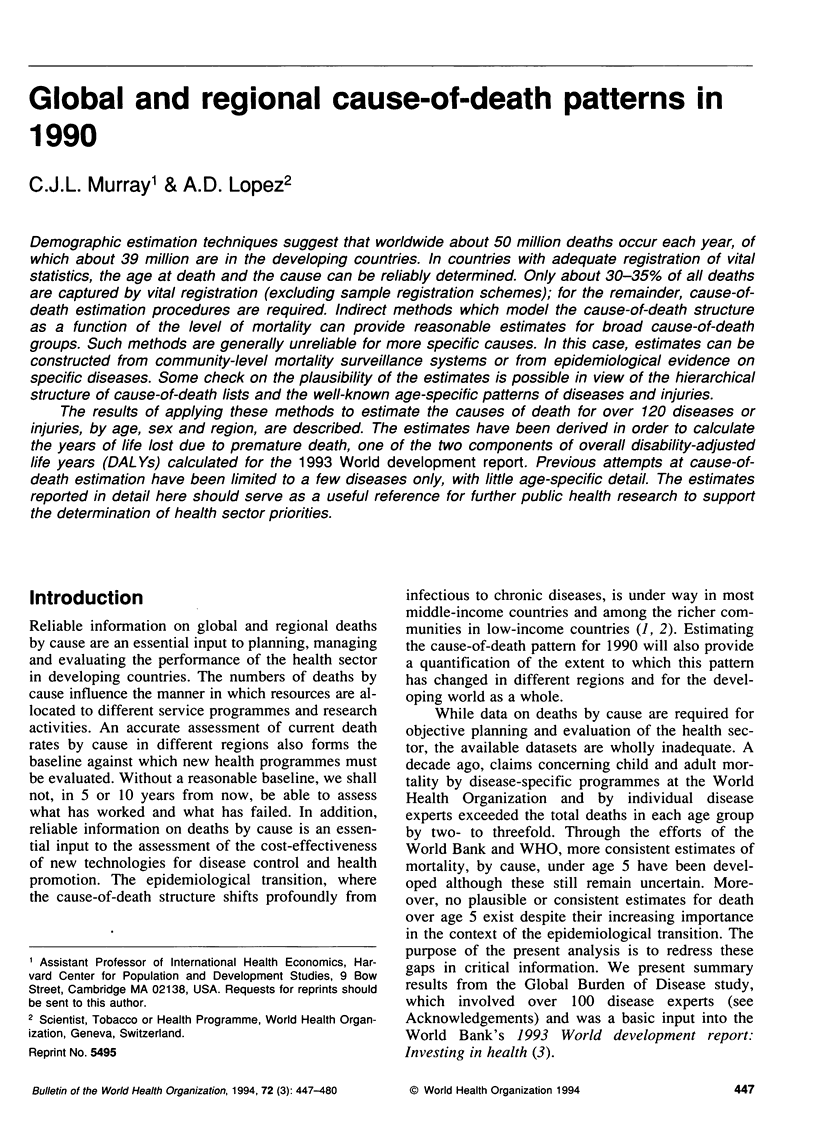
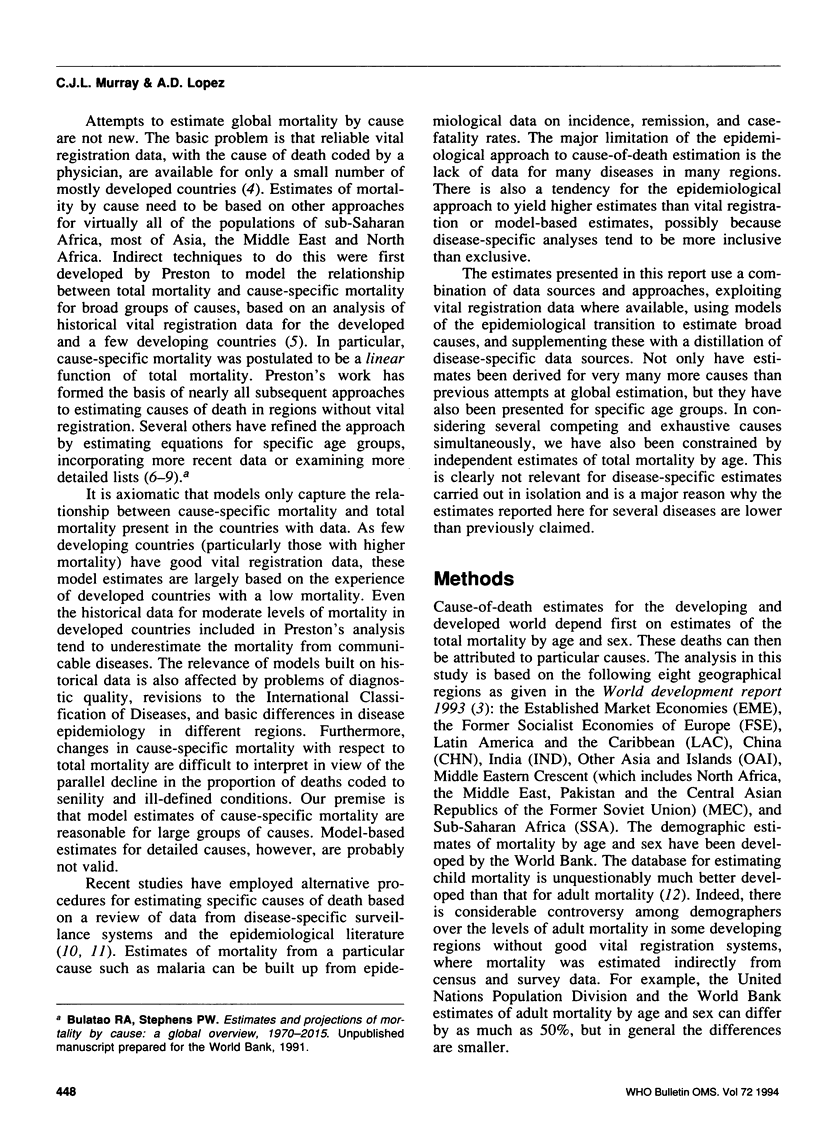
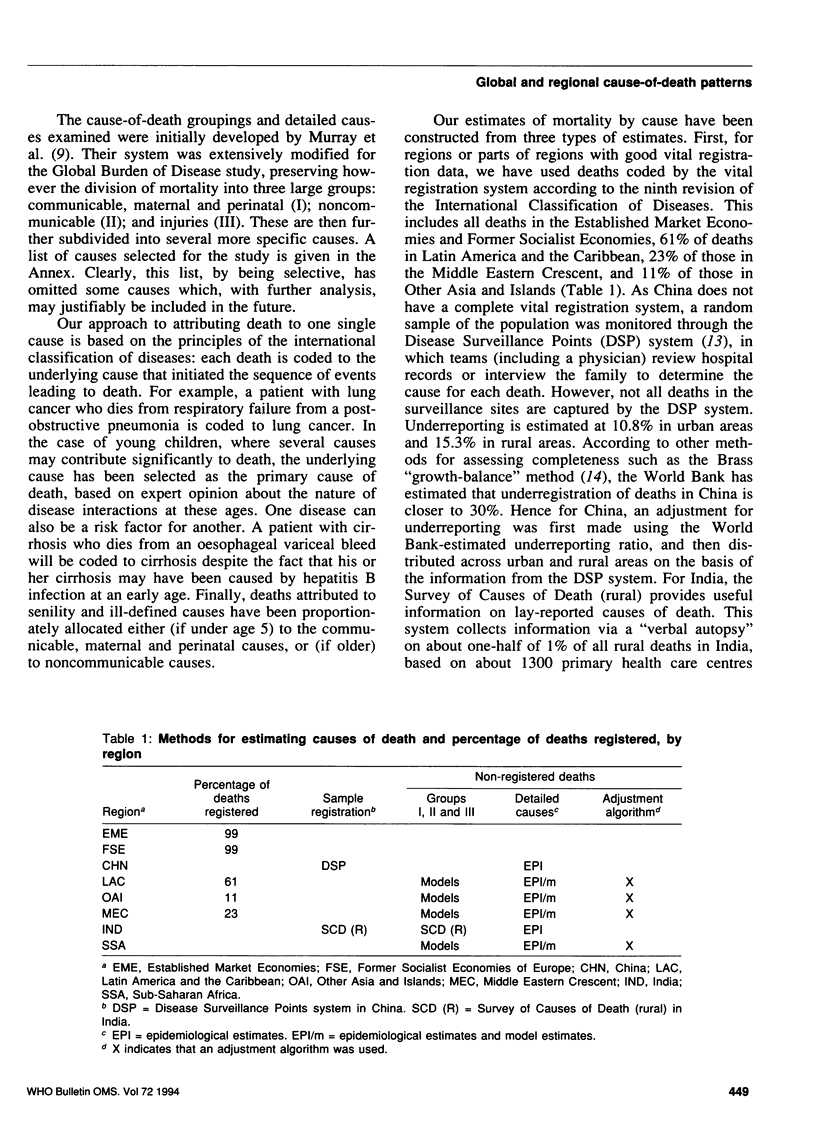
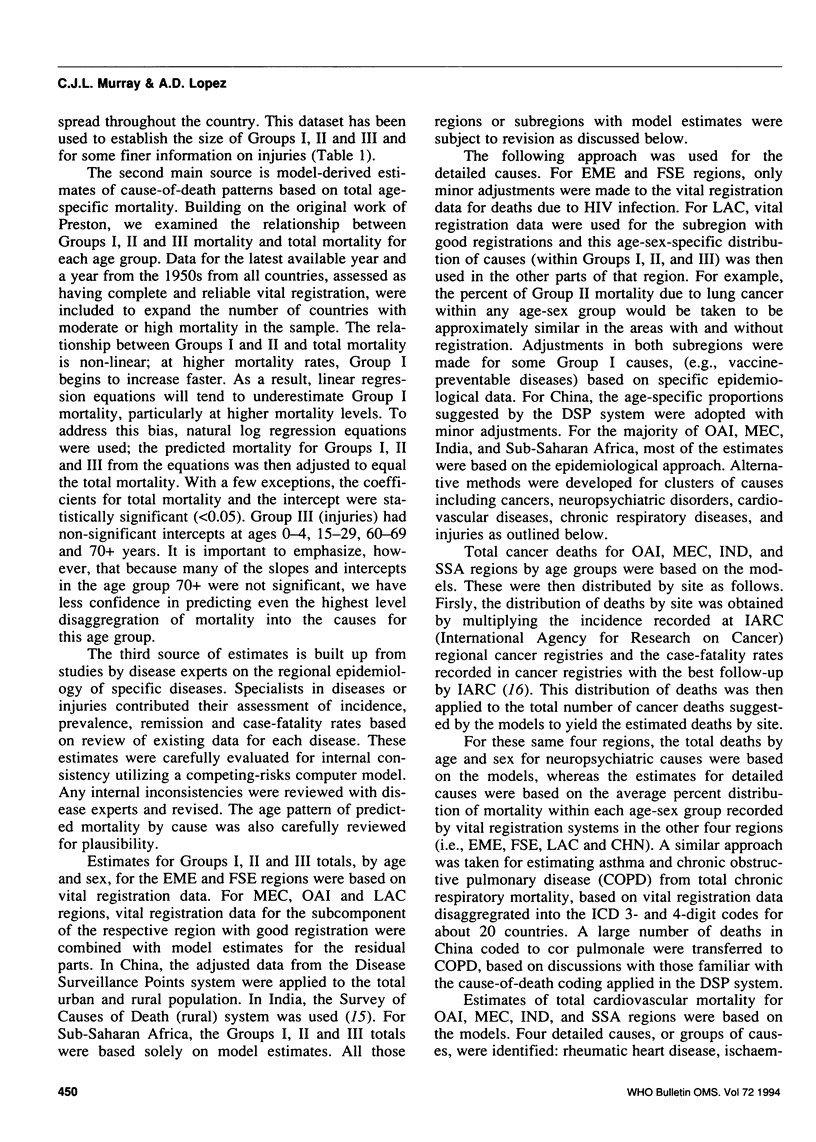
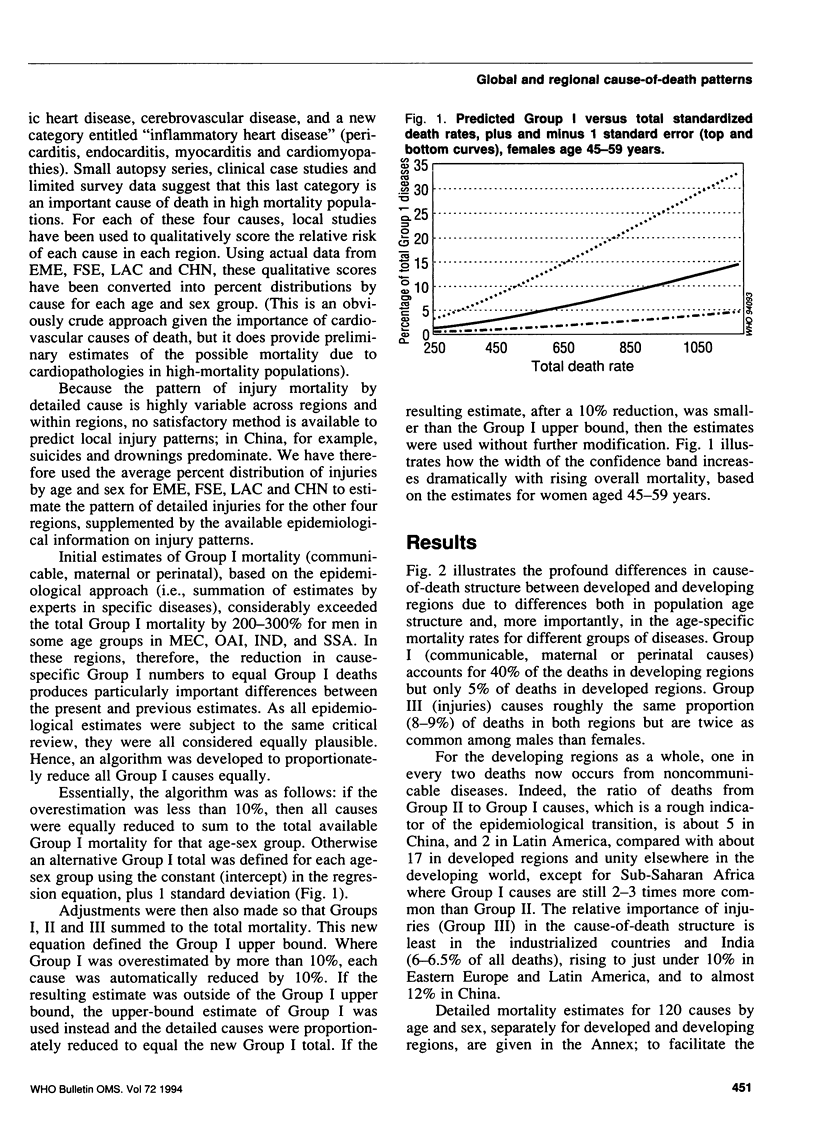
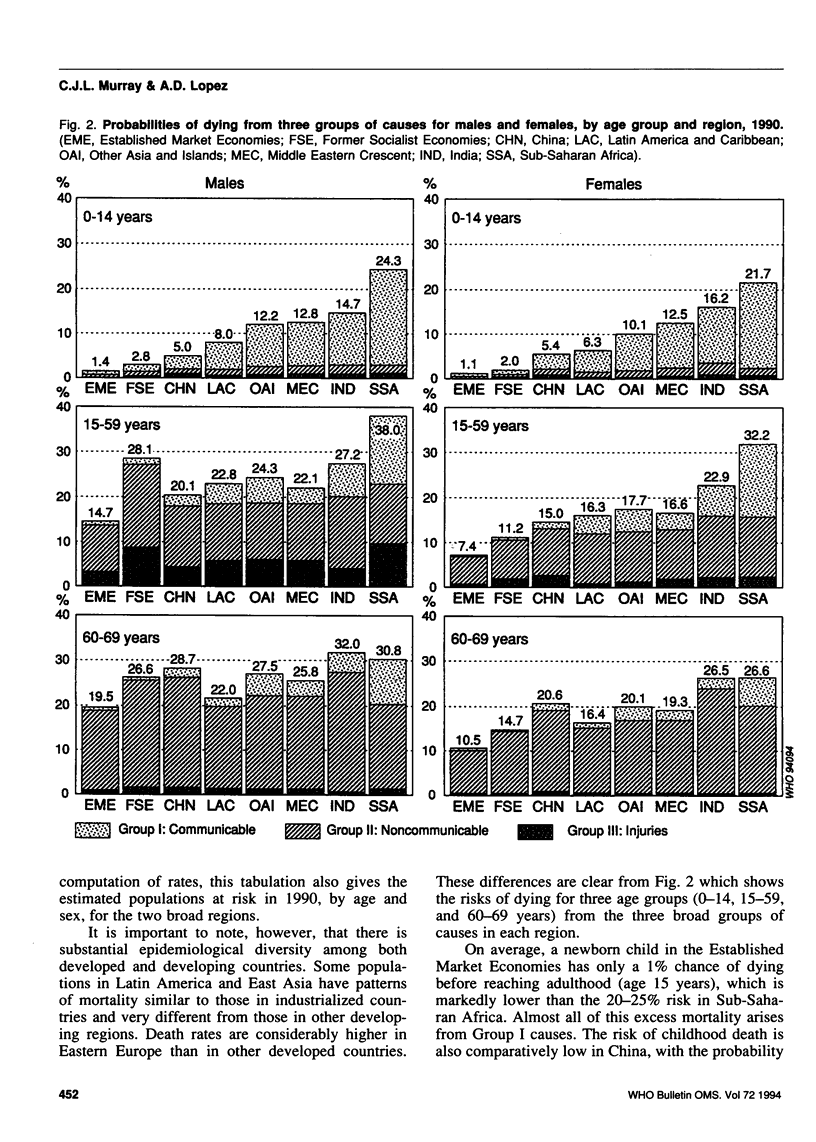
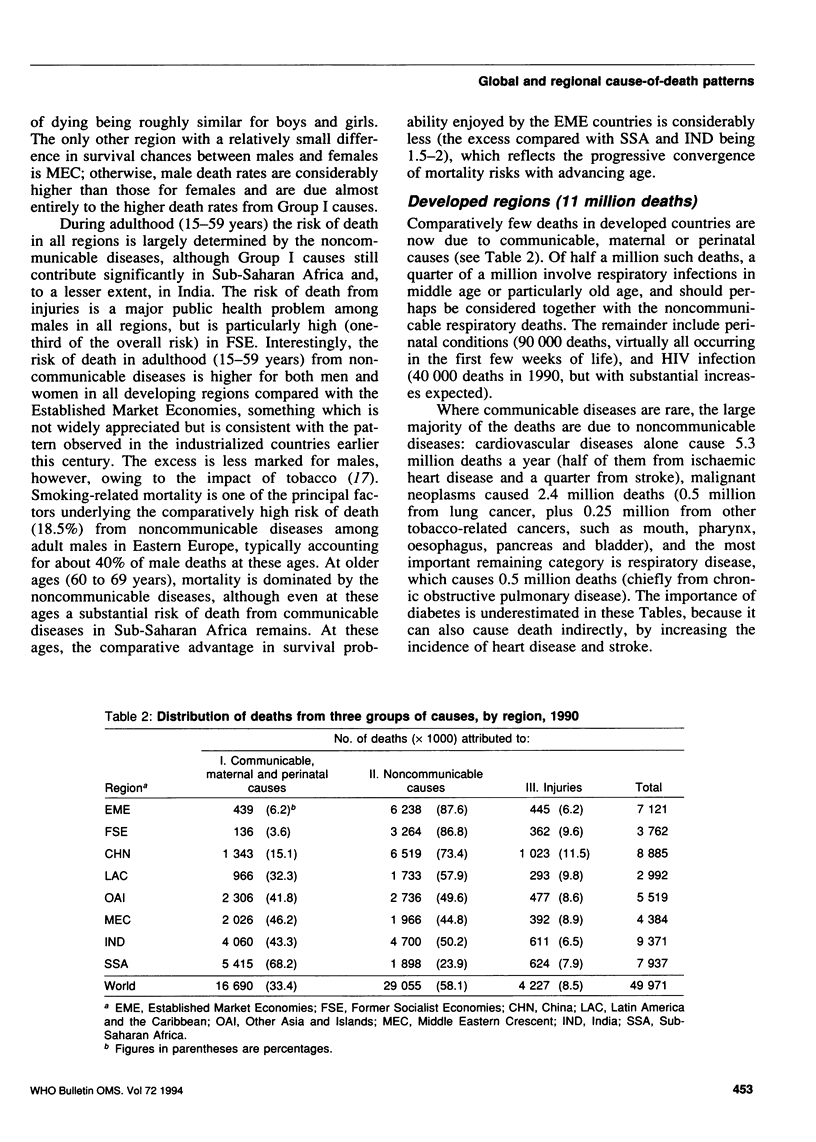
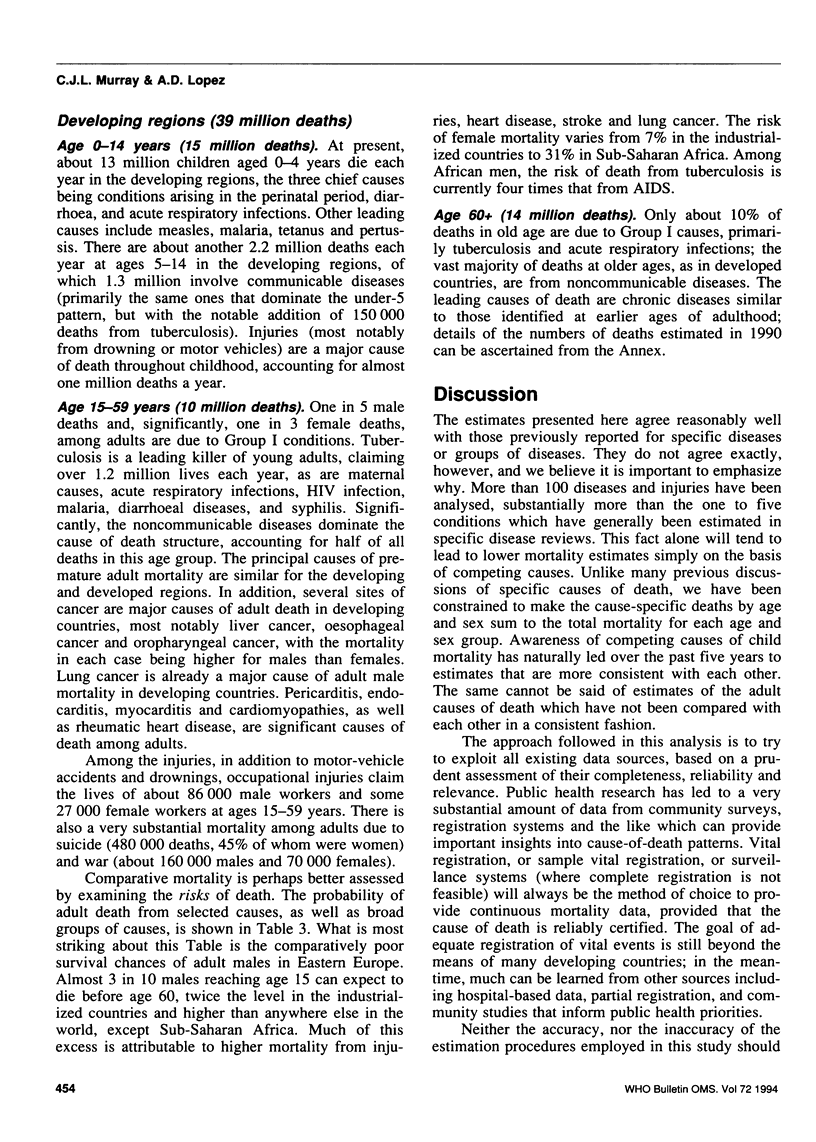
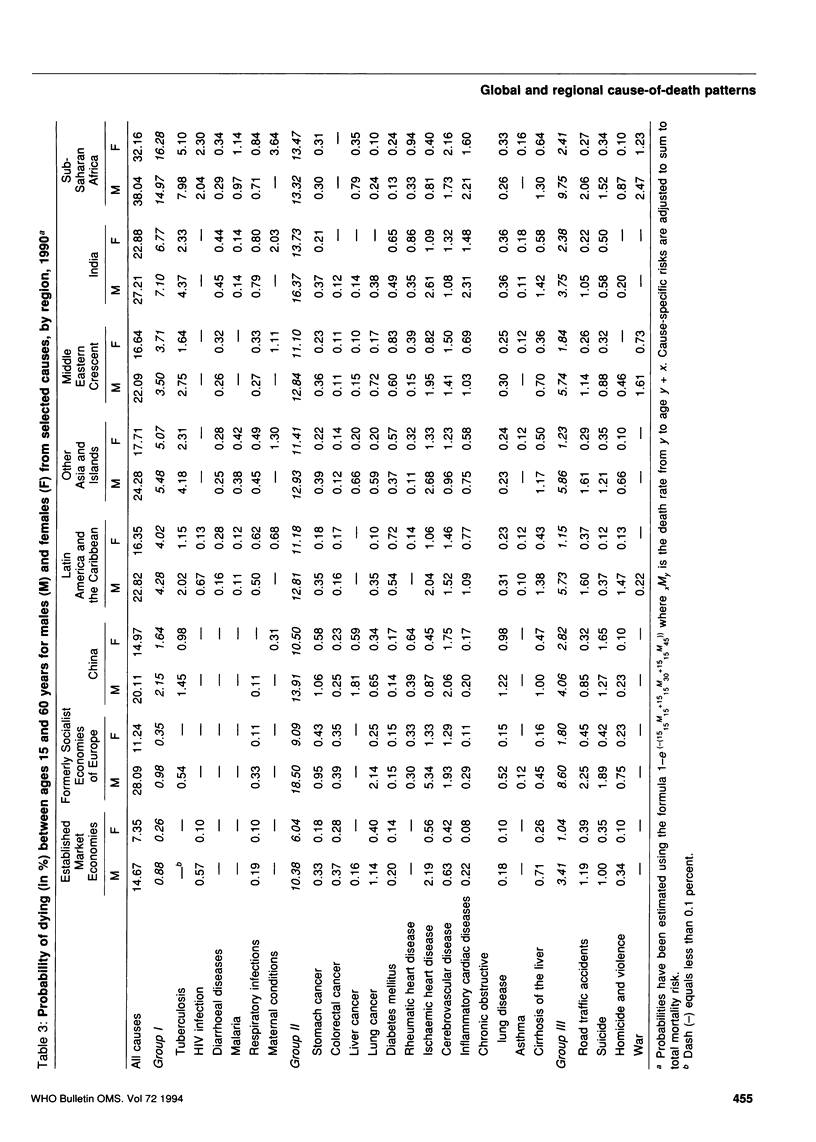
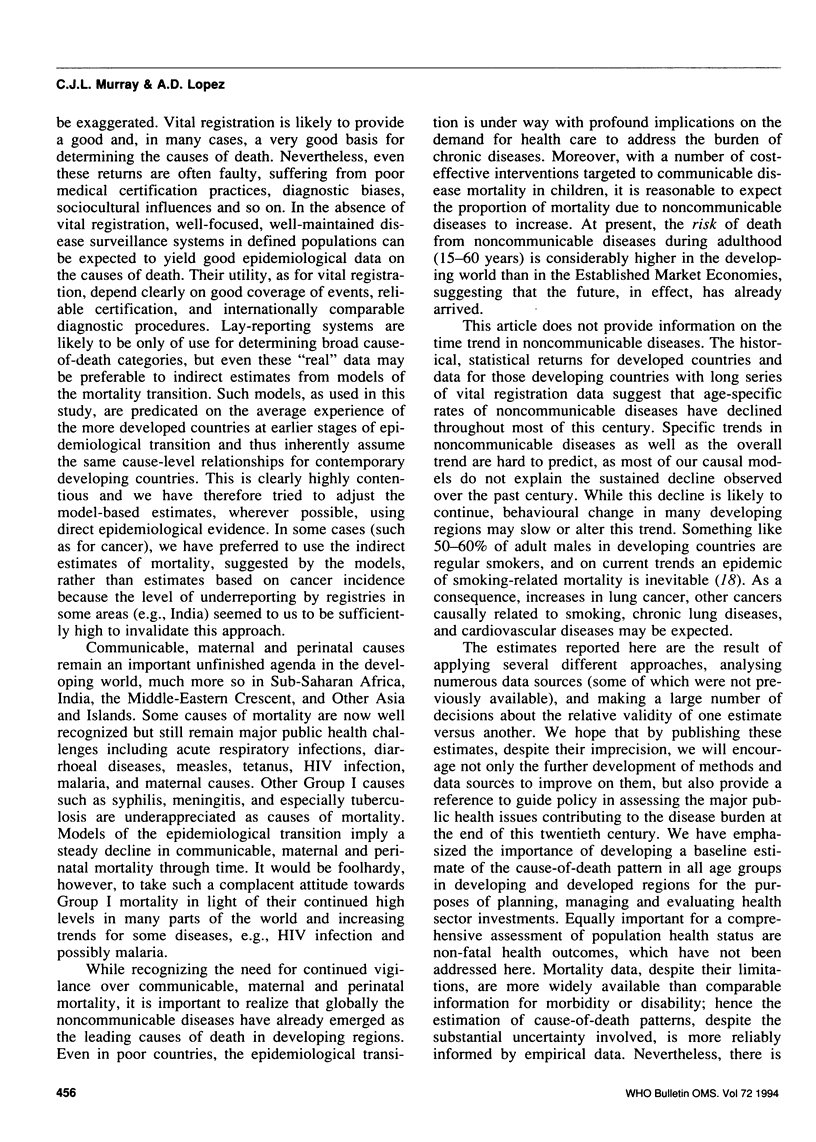
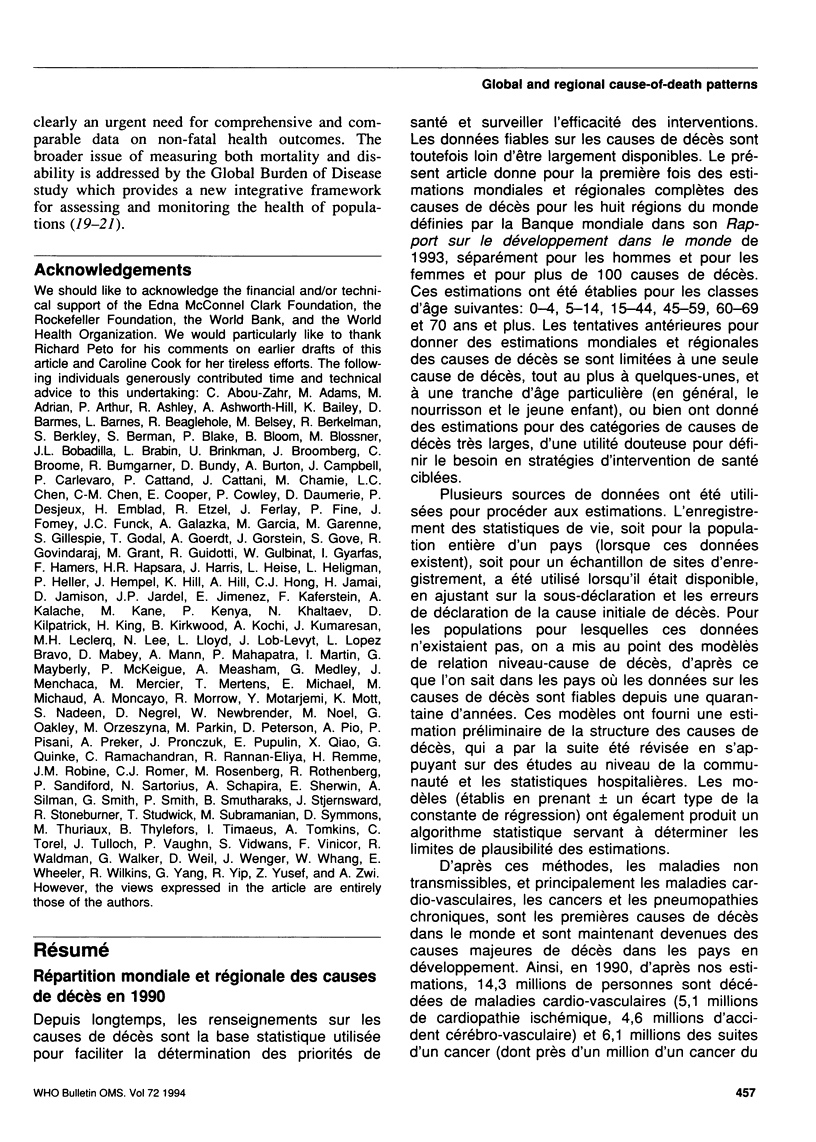
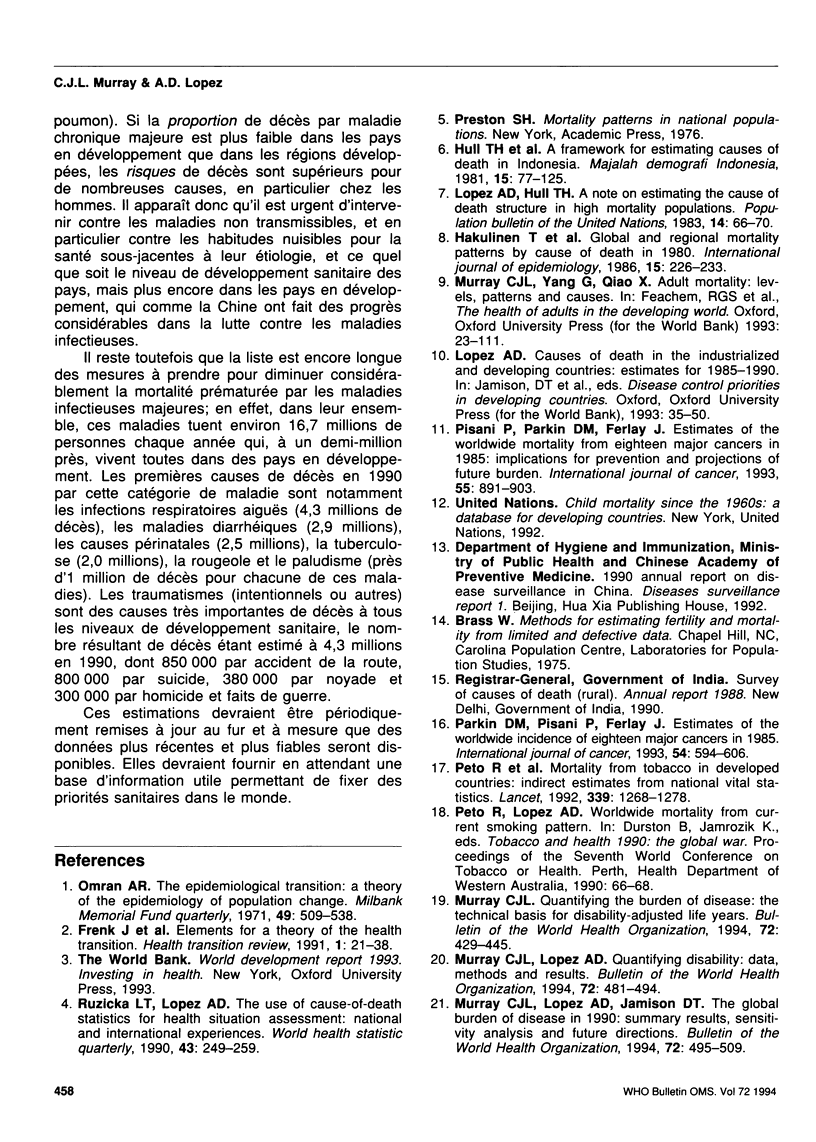
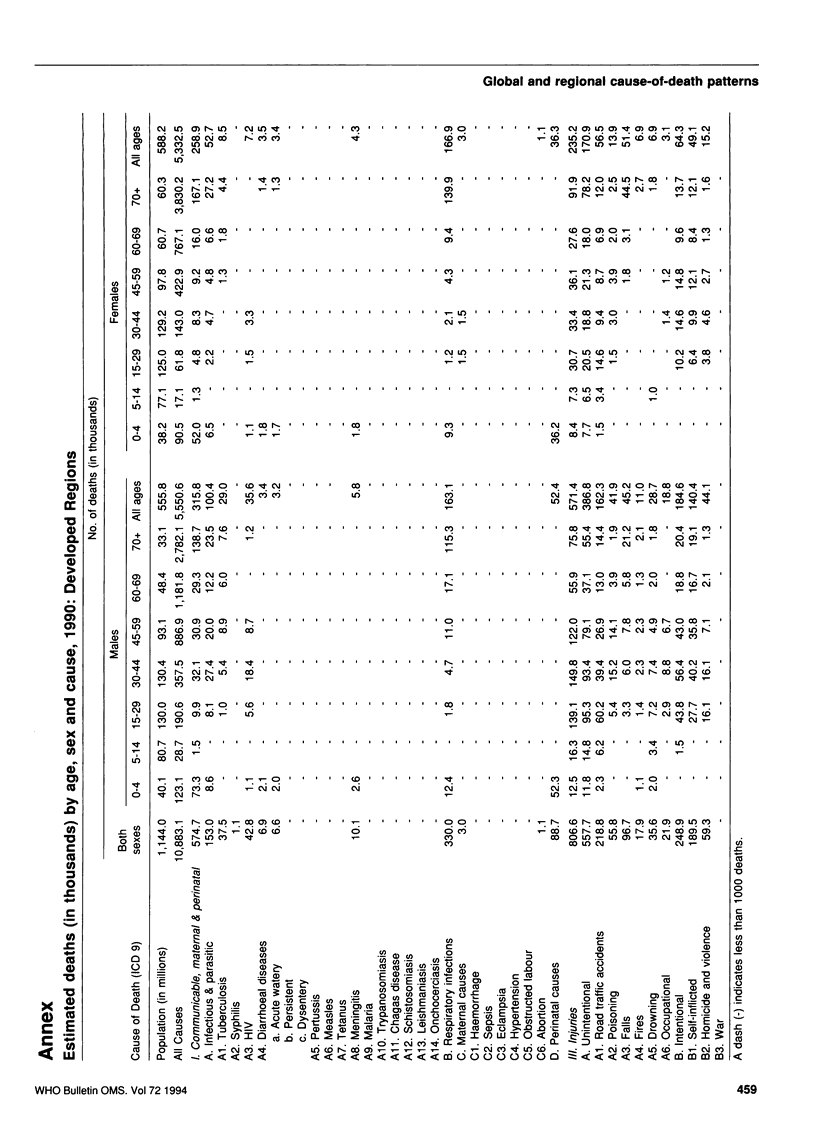
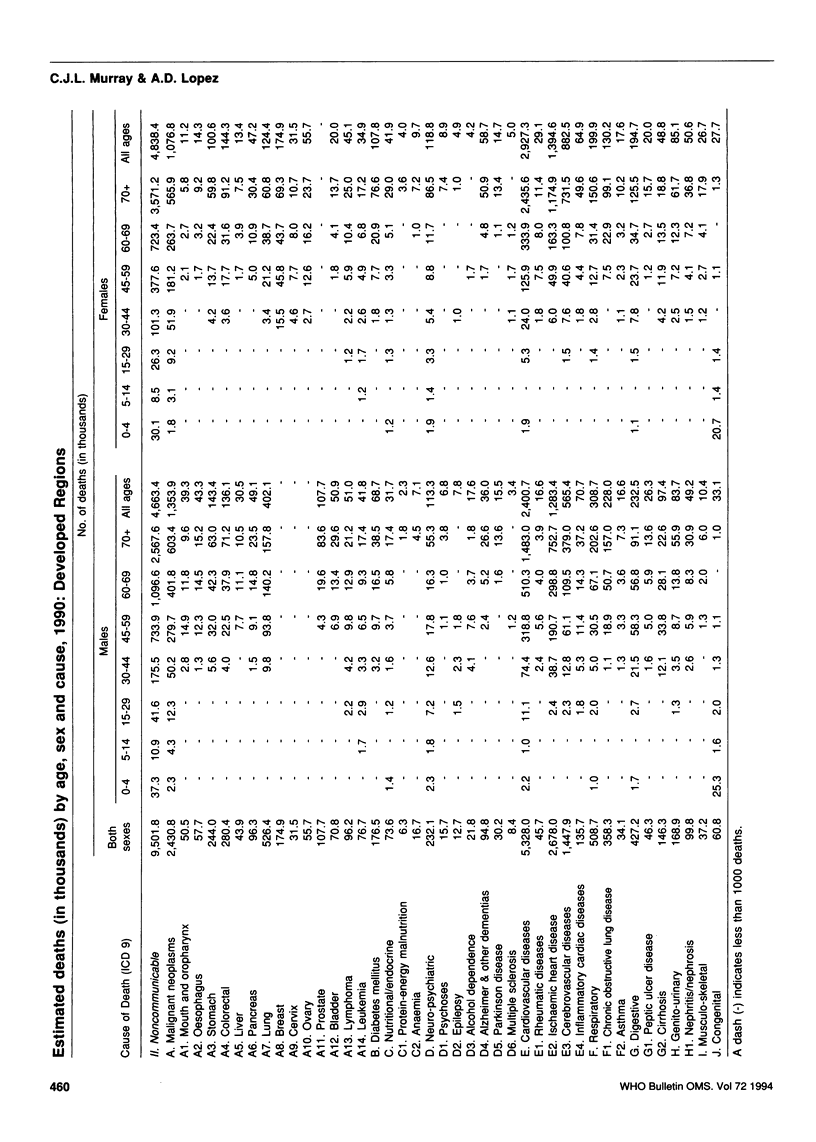
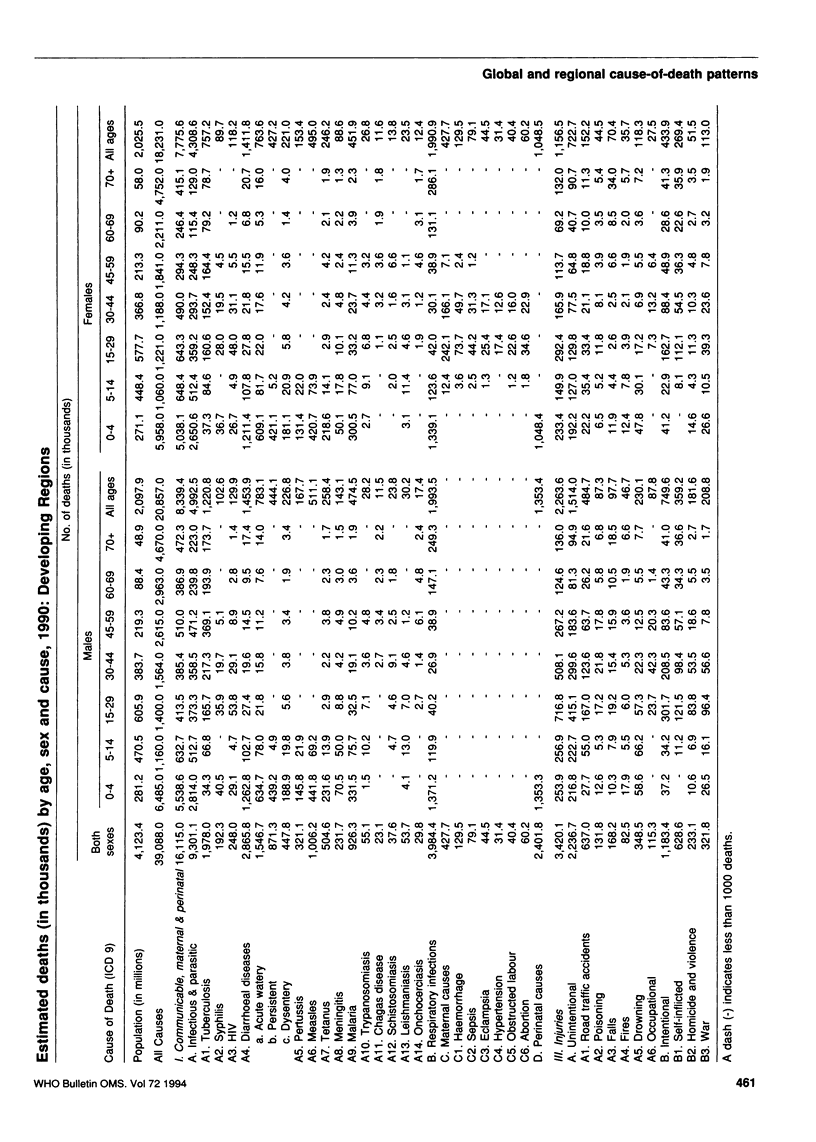
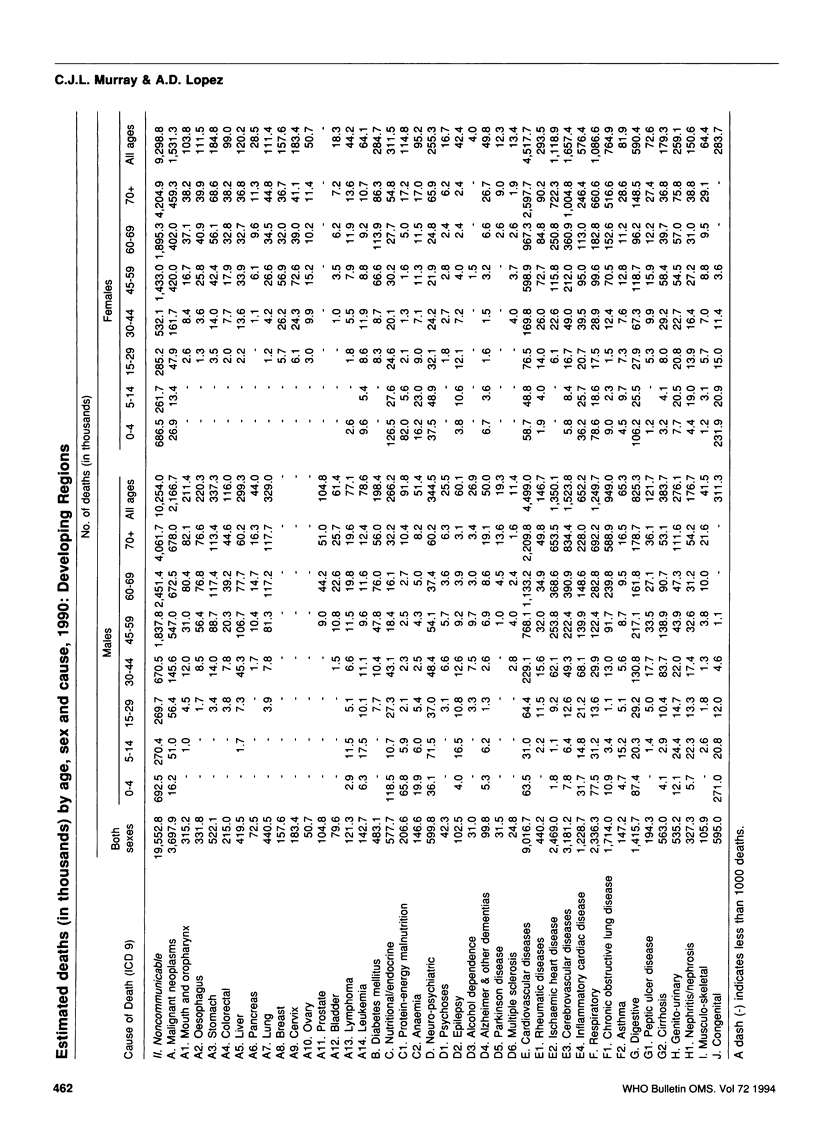
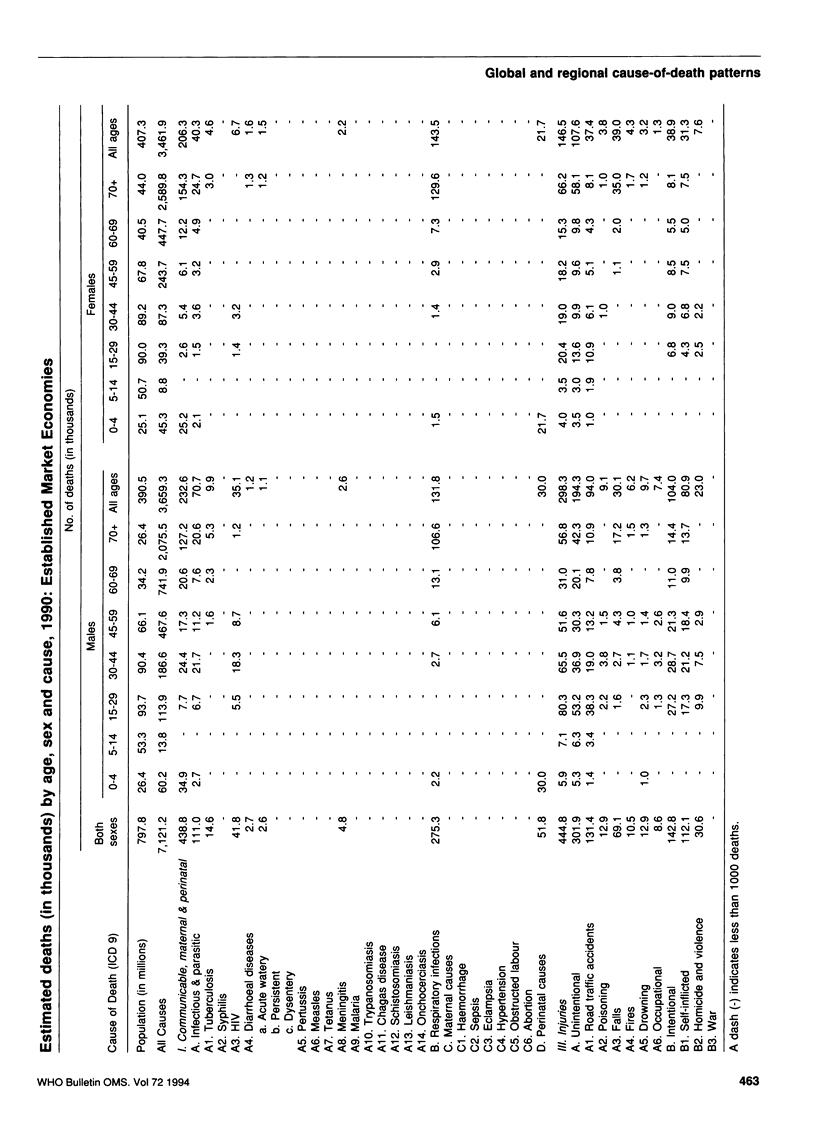
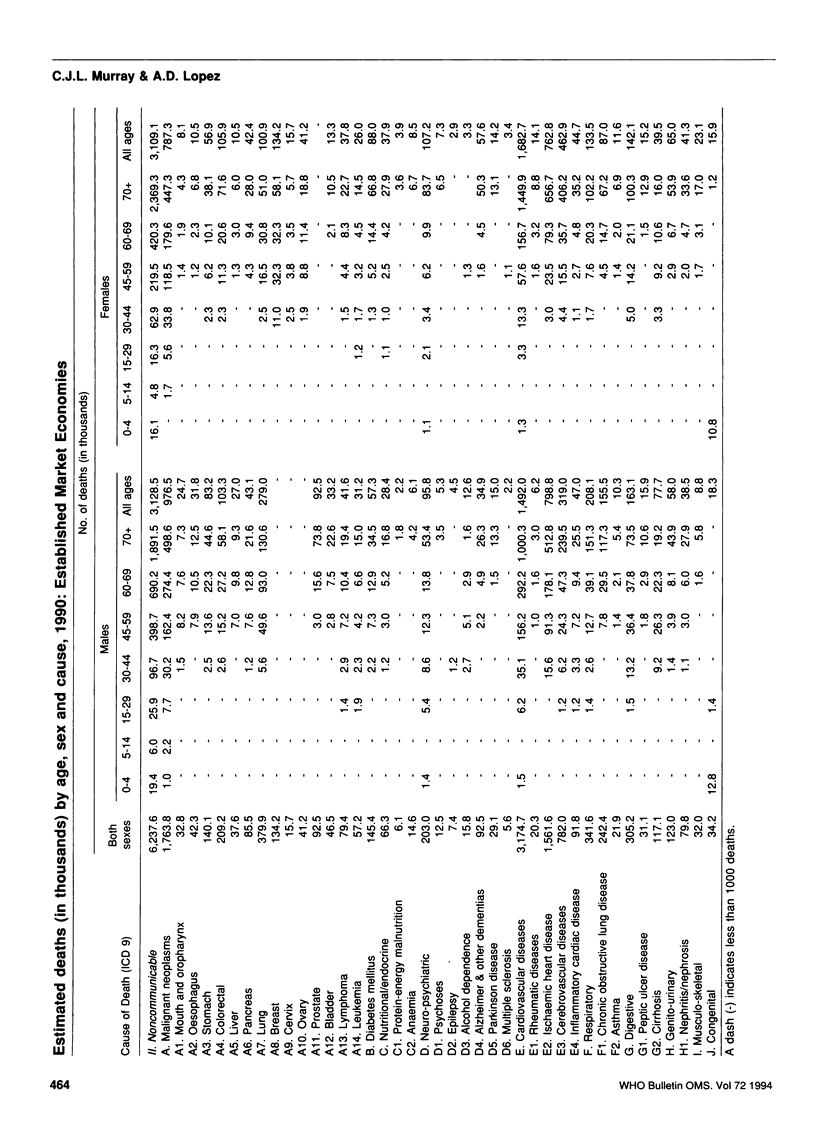
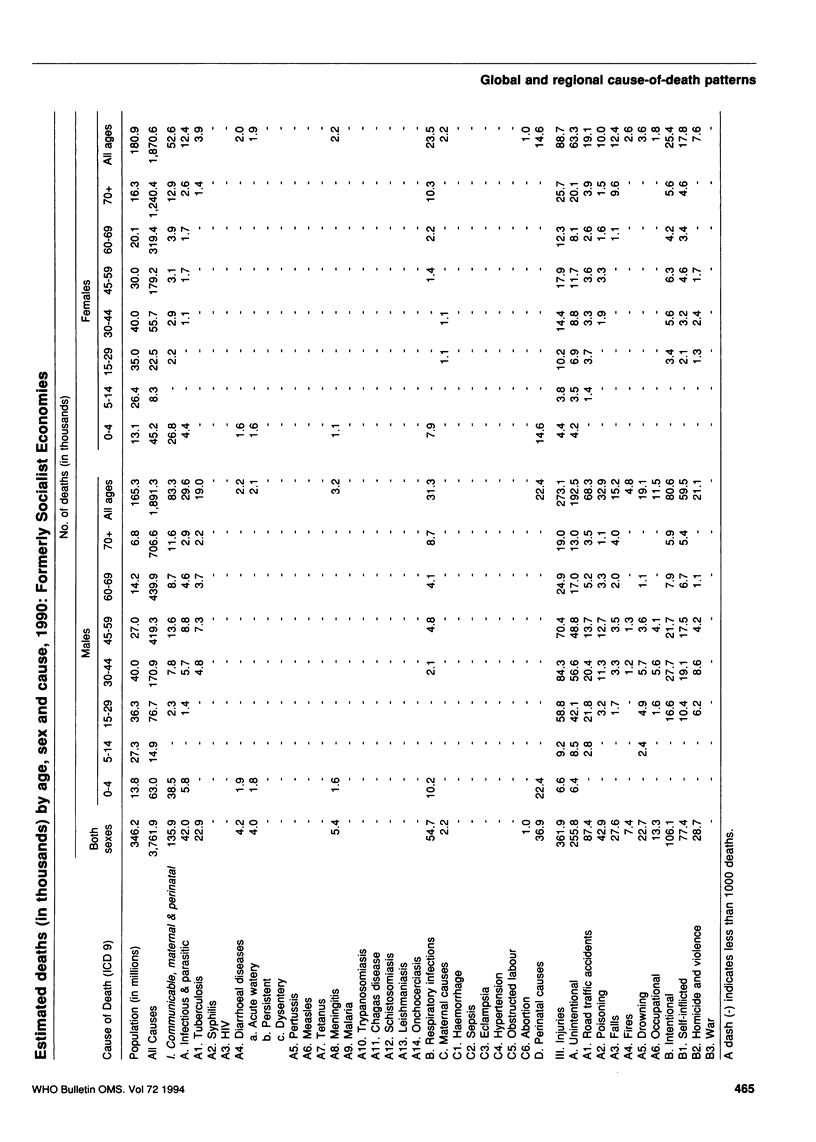
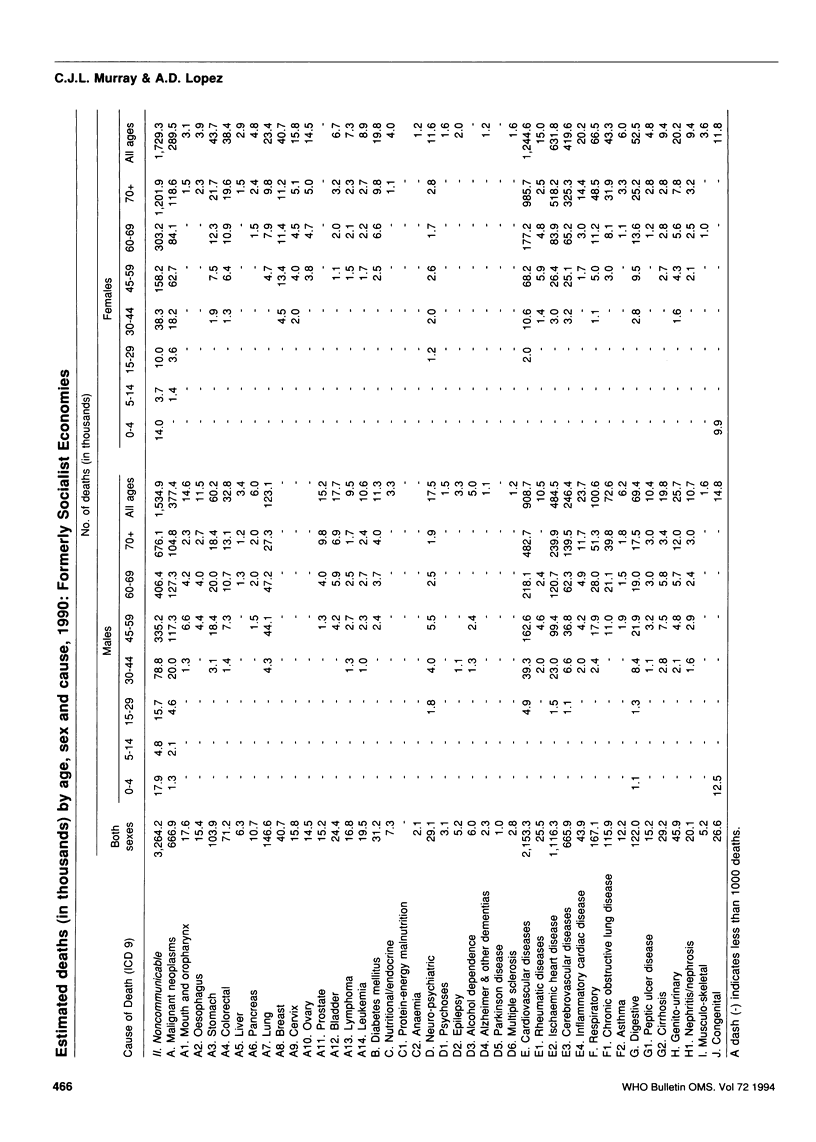

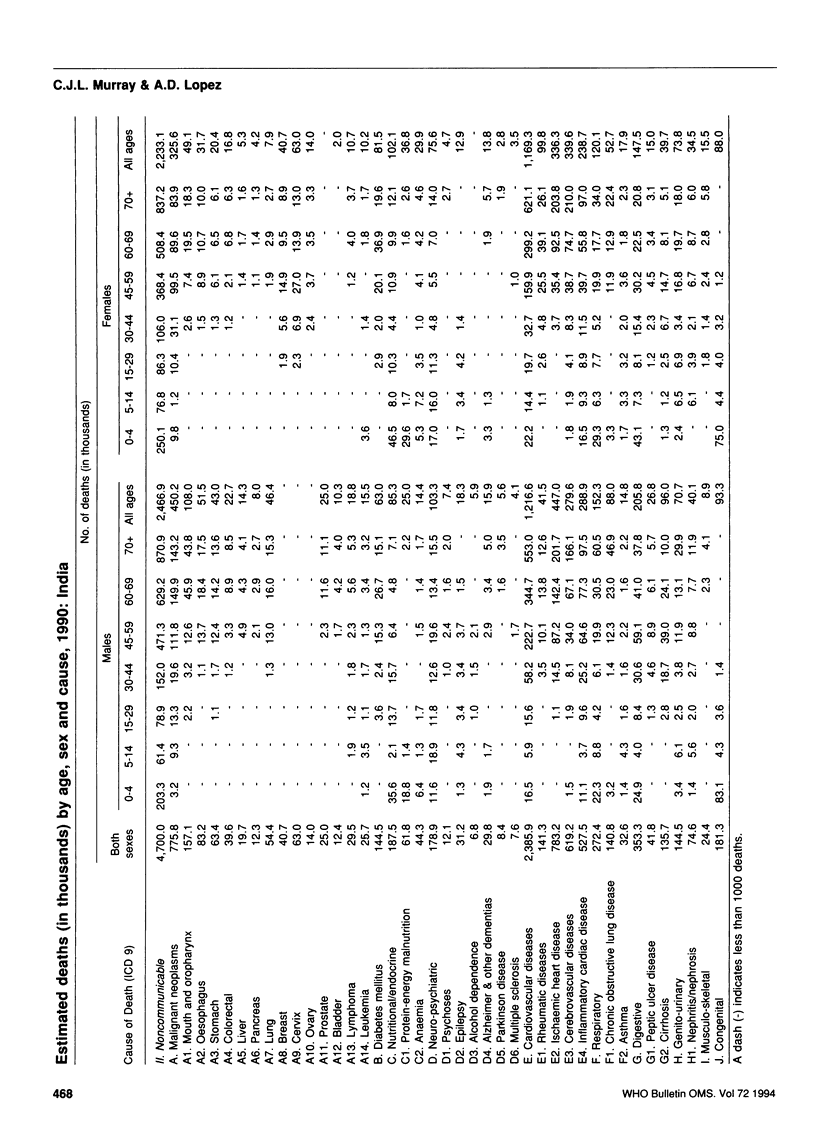
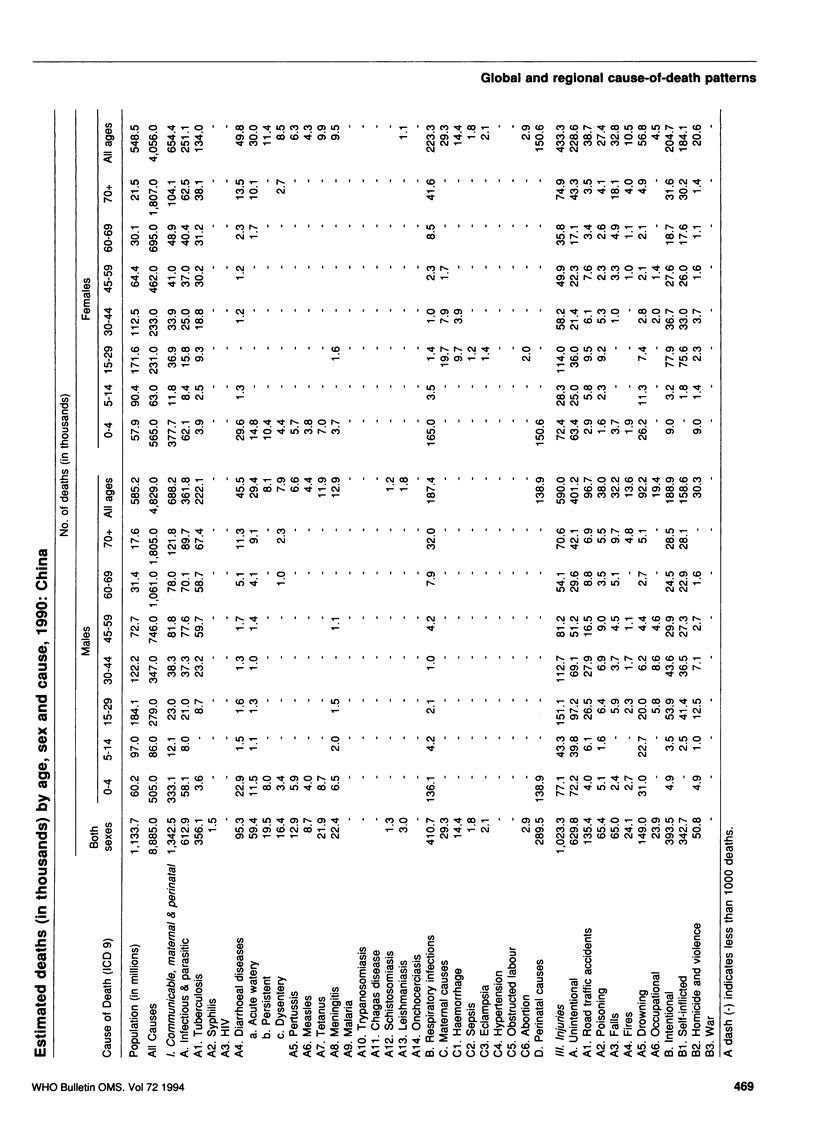

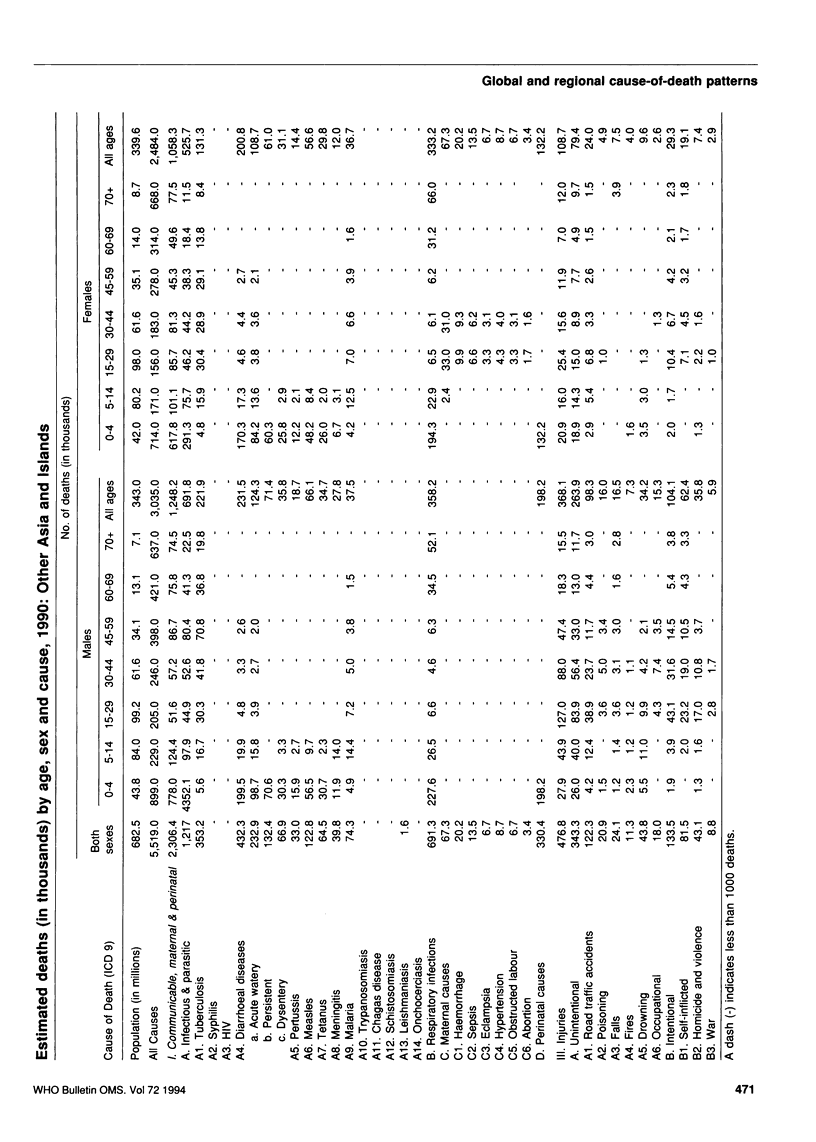
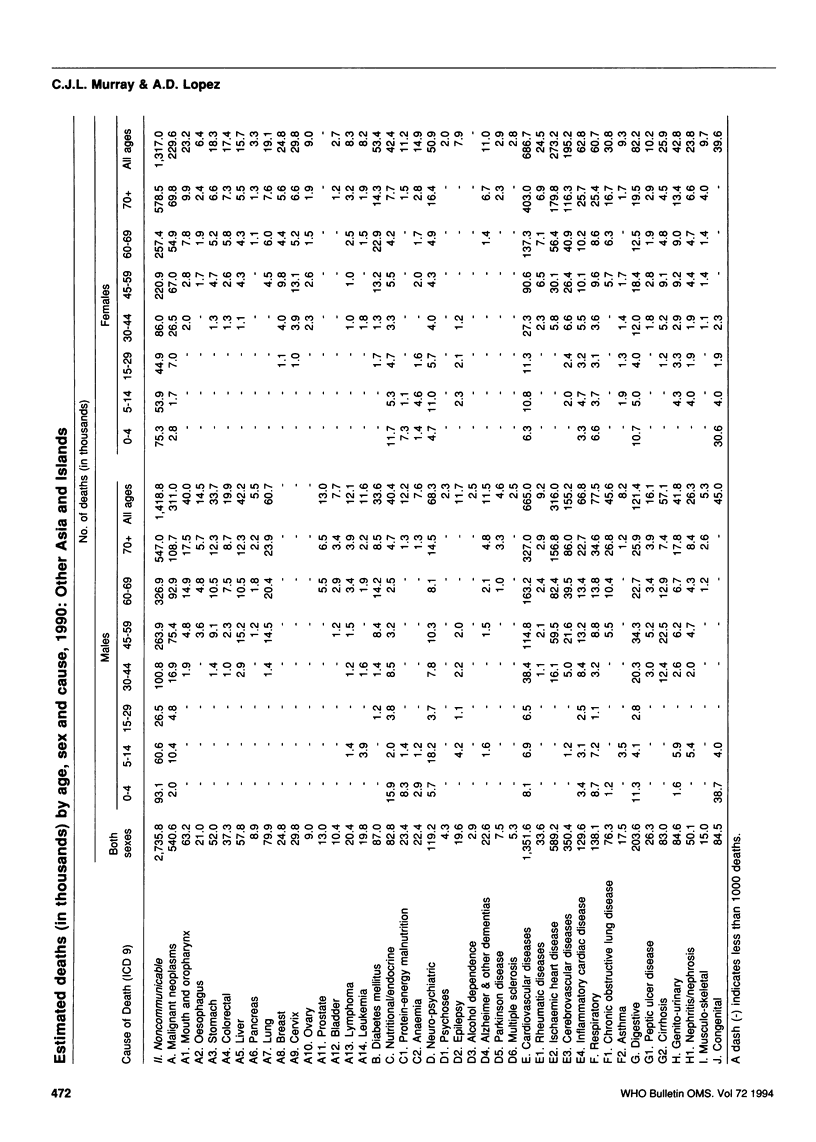
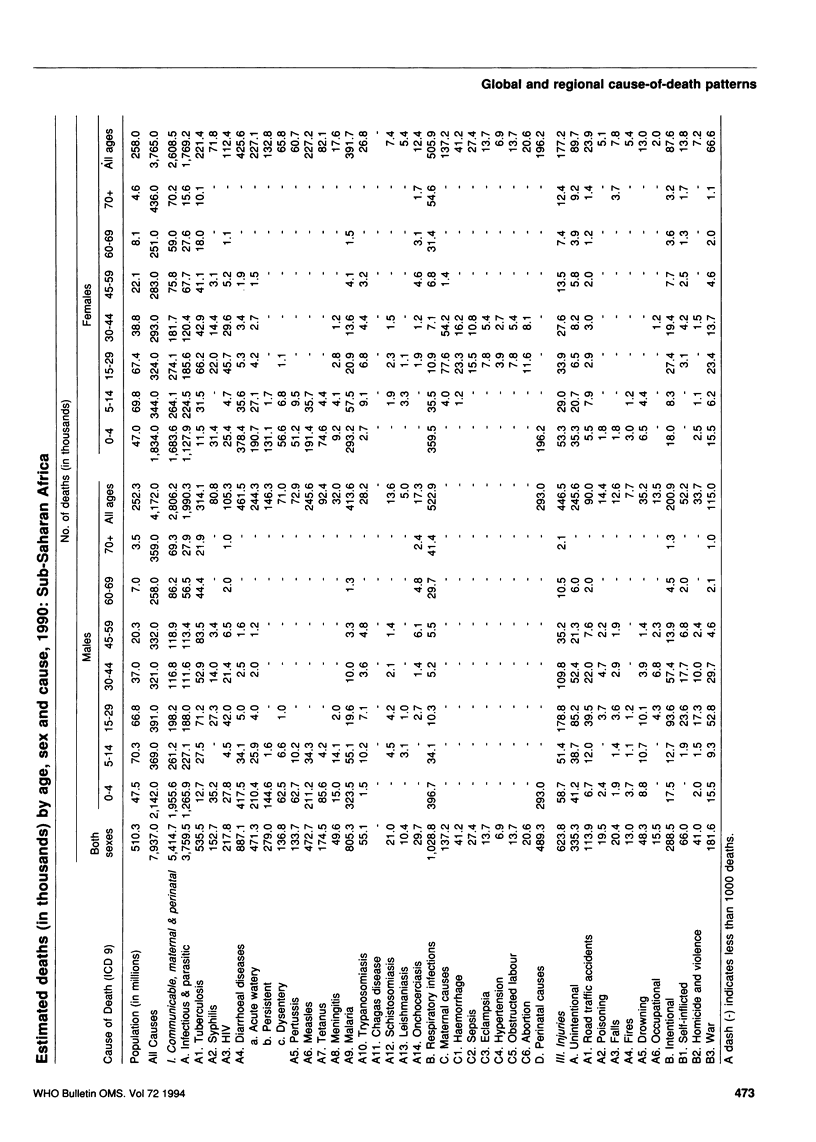
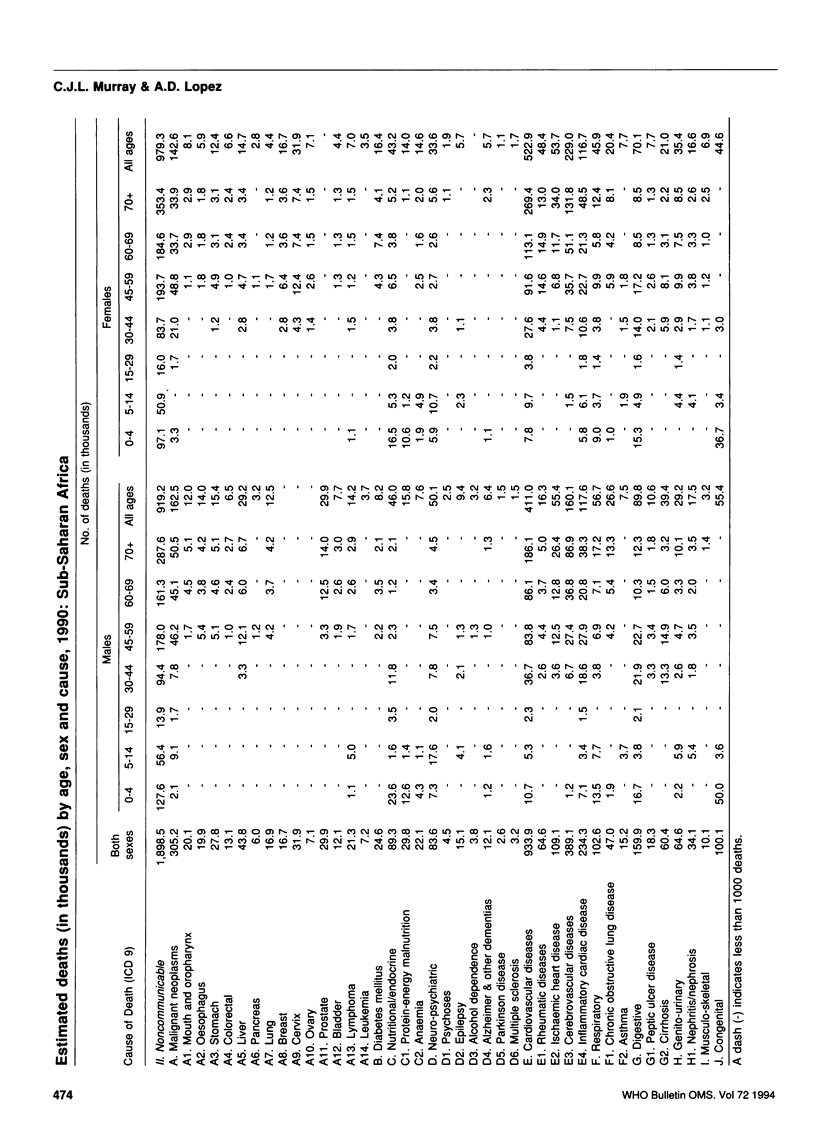
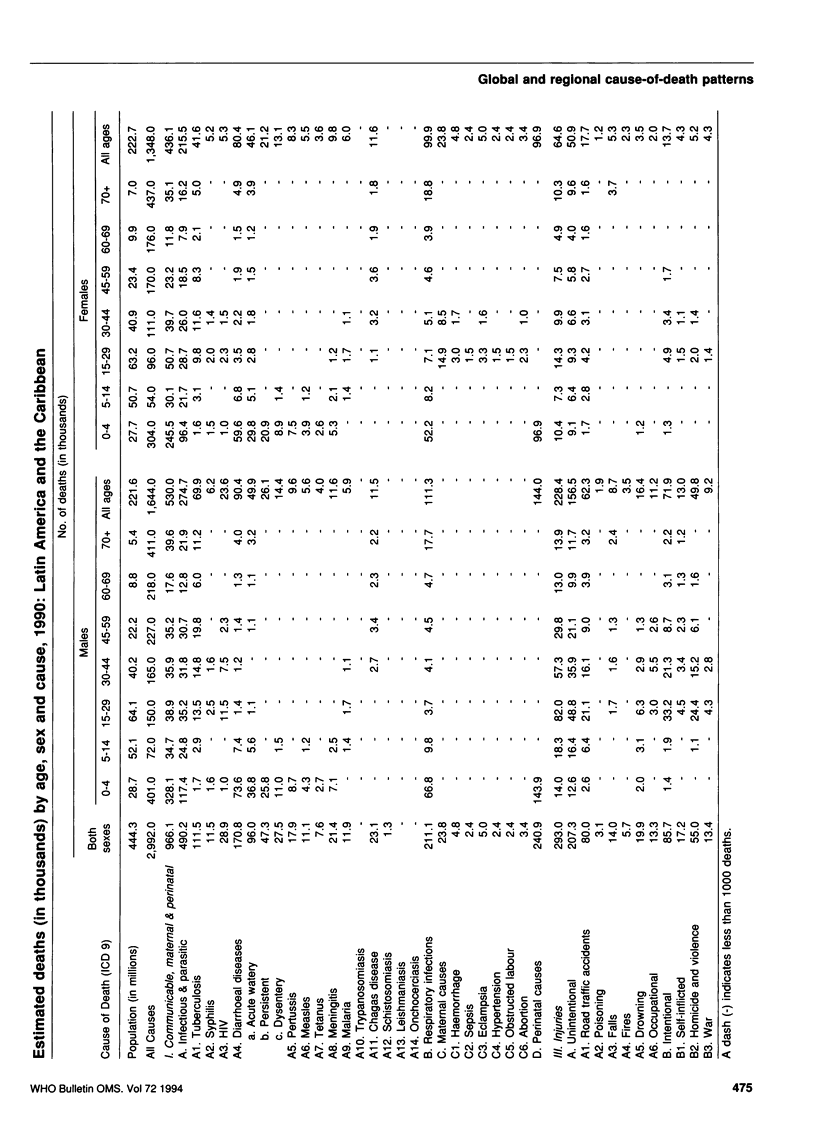
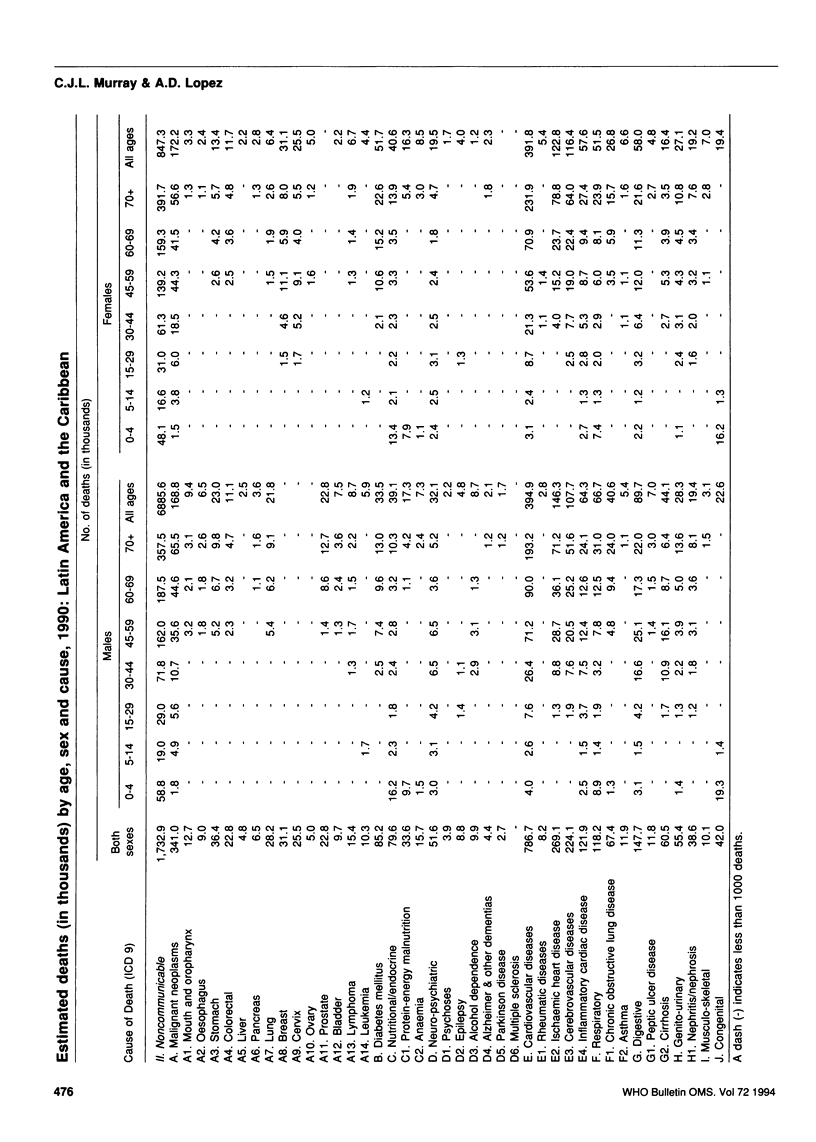
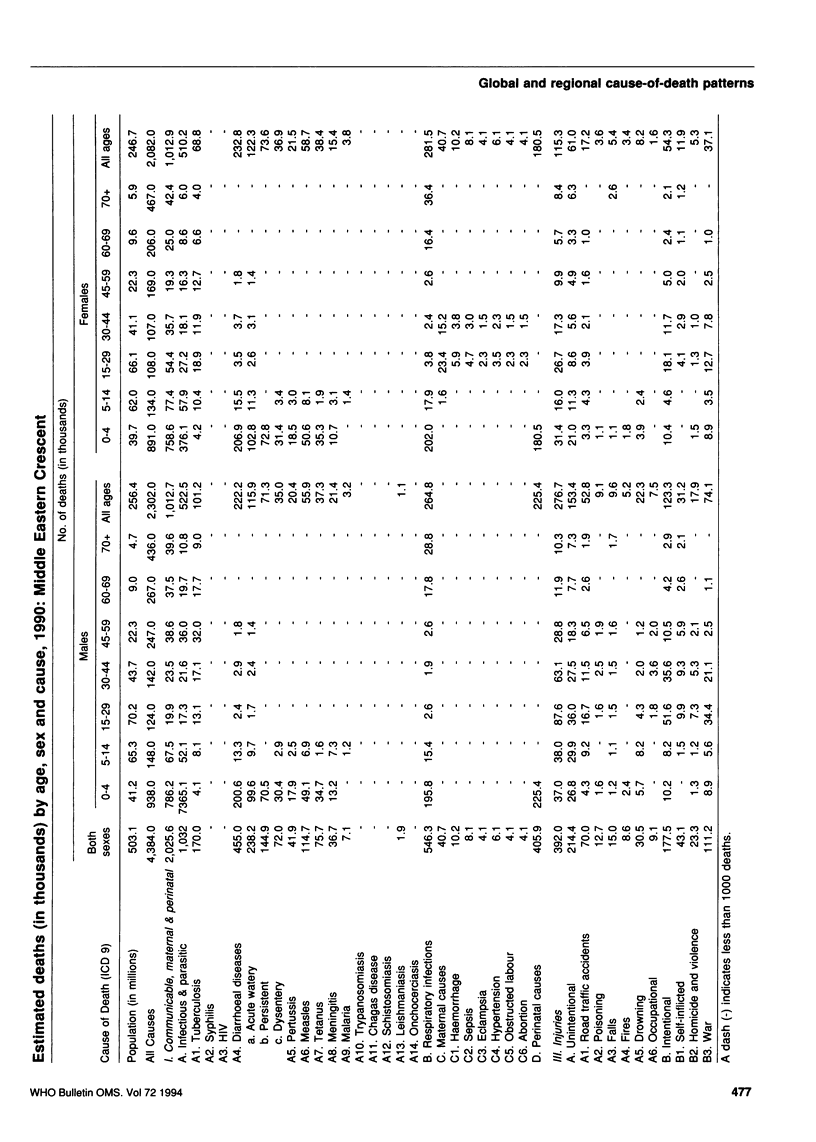
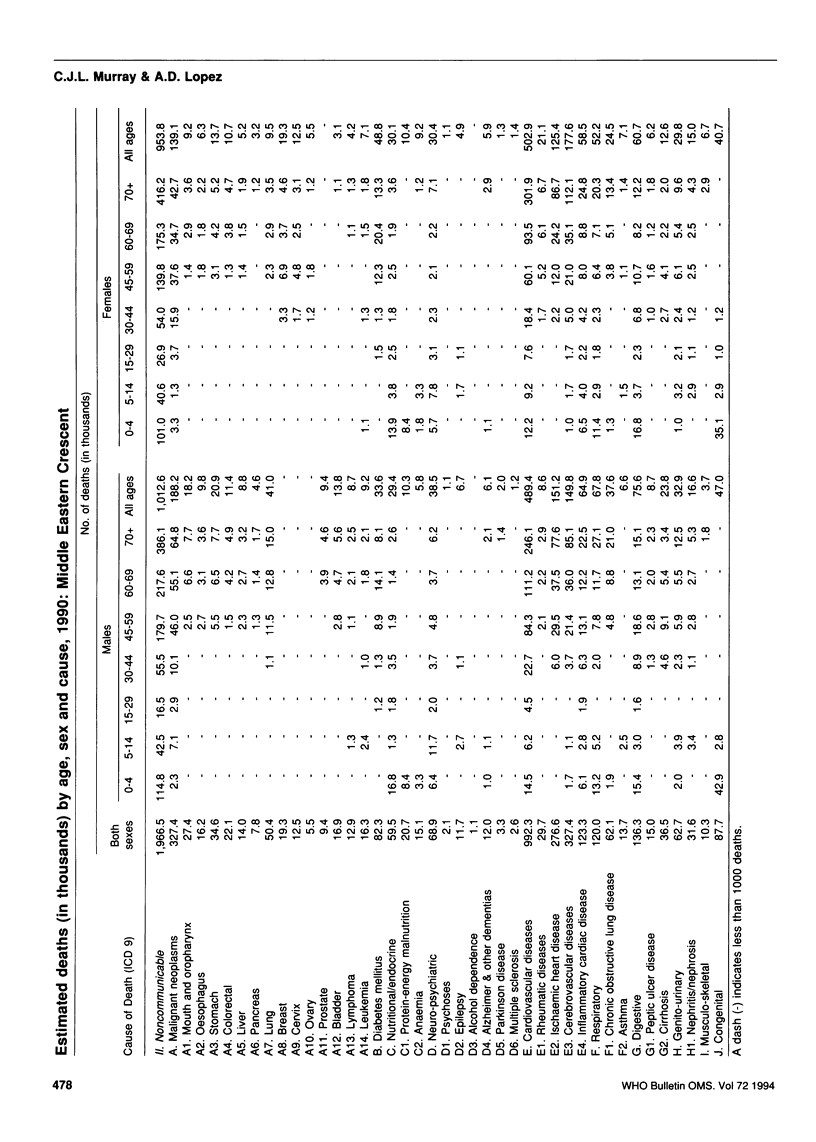
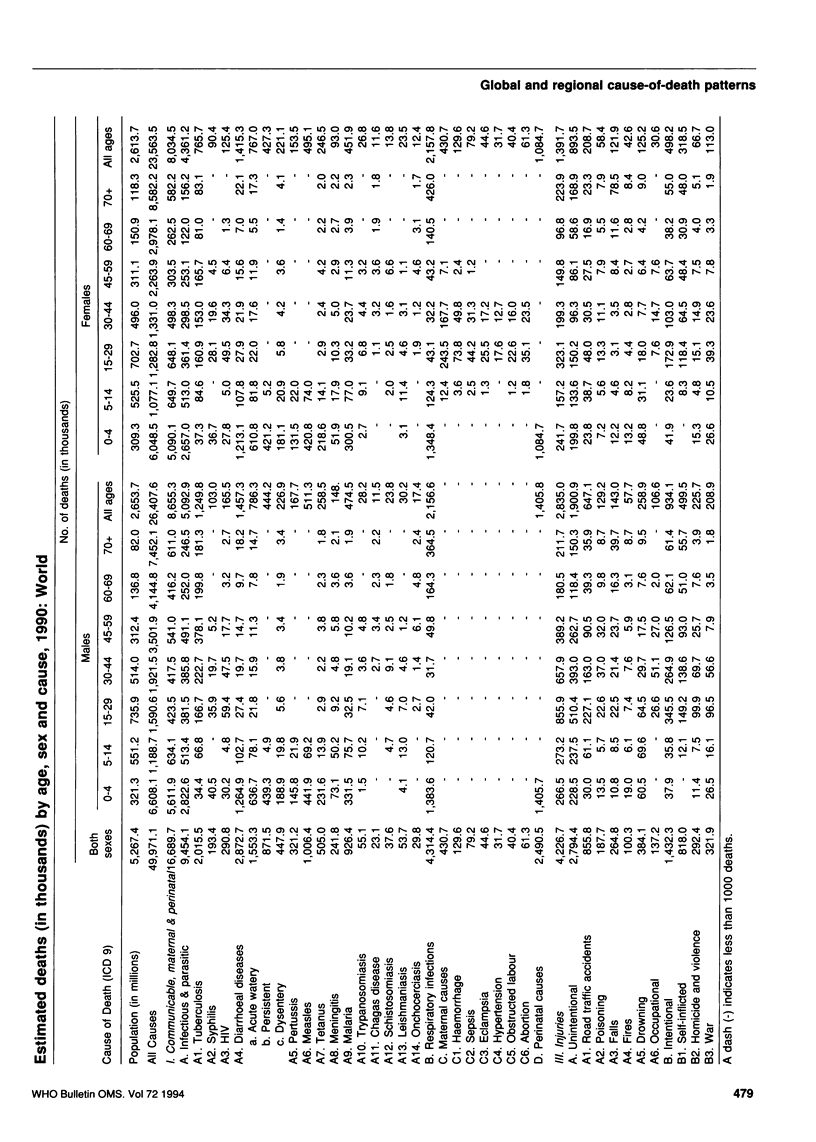
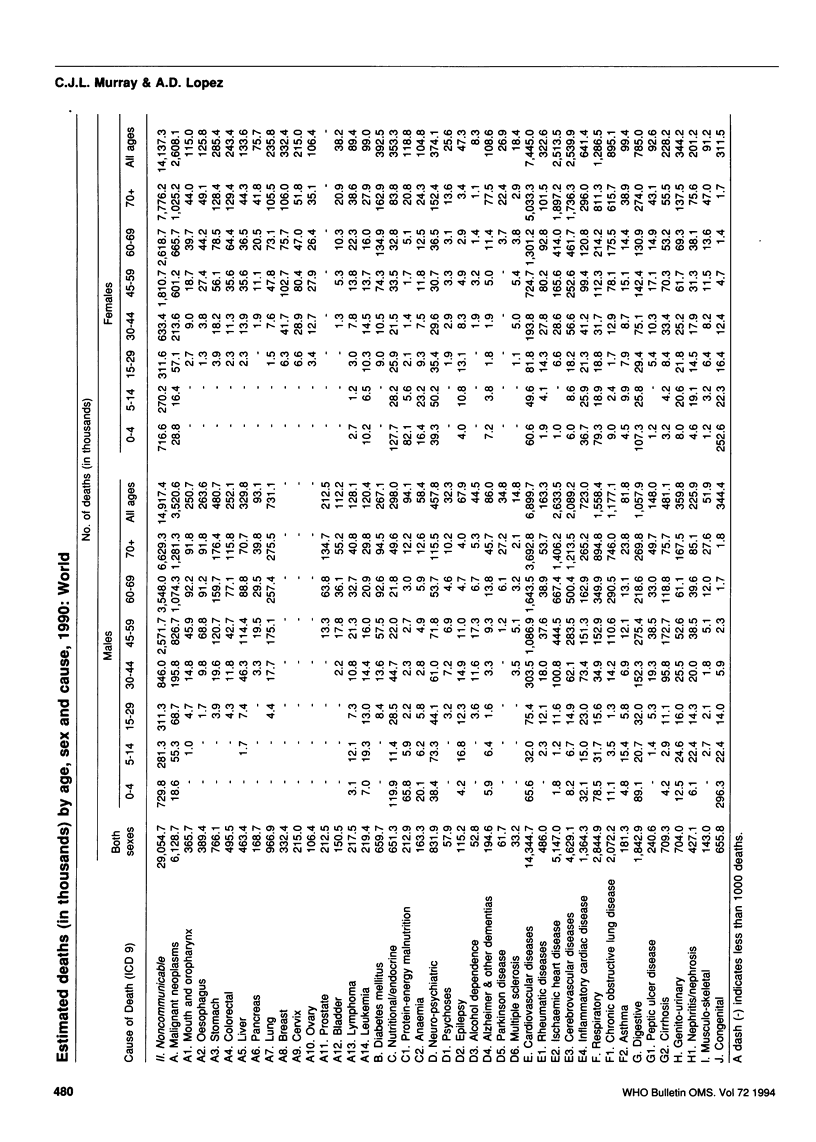
Selected References
These references are in PubMed. This may not be the complete list of references from this article.
- Frenk J., Bobadilla J. L., Stern C., Frejka T., Lozano R. Elements for a theory of the health transition. Health Transit Rev. 1991 Apr;1(1):21–38. [PubMed] [Google Scholar]
- Hakulinen T., Hansluwka H., Lopez A. D., Nakada T. Global and regional mortality patterns by cause of death in 1980. Int J Epidemiol. 1986 Jun;15(2):226–233. doi: 10.1093/ije/15.2.226. [DOI] [PubMed] [Google Scholar]
- Hull T. H. A framework for estimating causes of death in Indonesia [causes of death in Indonesia]. Majalah Demografi Indones. 1981 Jun;8(15):77–125. [PubMed] [Google Scholar]
- Murray C. J., Lopez A. D., Jamison D. T. The global burden of disease in 1990: summary results, sensitivity analysis and future directions. Bull World Health Organ. 1994;72(3):495–509. [PMC free article] [PubMed] [Google Scholar]
- Murray C. J., Lopez A. D. Quantifying disability: data, methods and results. Bull World Health Organ. 1994;72(3):481–494. [PMC free article] [PubMed] [Google Scholar]
- Murray C. J. Quantifying the burden of disease: the technical basis for disability-adjusted life years. Bull World Health Organ. 1994;72(3):429–445. [PMC free article] [PubMed] [Google Scholar]
- Omran A. R. The epidemiologic transition. A theory of the epidemiology of population change. Milbank Mem Fund Q. 1971 Oct;49(4):509–538. [PubMed] [Google Scholar]
- Parkin D. M., Pisani P., Ferlay J. Estimates of the worldwide incidence of eighteen major cancers in 1985. Int J Cancer. 1993 Jun 19;54(4):594–606. doi: 10.1002/ijc.2910540413. [DOI] [PubMed] [Google Scholar]
- Peto R., Lopez A. D., Boreham J., Thun M., Heath C., Jr Mortality from tobacco in developed countries: indirect estimation from national vital statistics. Lancet. 1992 May 23;339(8804):1268–1278. doi: 10.1016/0140-6736(92)91600-d. [DOI] [PubMed] [Google Scholar]
- Pisani P., Parkin D. M., Ferlay J. Estimates of the worldwide mortality from eighteen major cancers in 1985. Implications for prevention and projections of future burden. Int J Cancer. 1993 Dec 2;55(6):891–903. doi: 10.1002/ijc.2910550604. [DOI] [PubMed] [Google Scholar]
- Ruzicka L. T., Lopez A. D. The use of cause-of-death statistics for health situation assessment: national and international experiences. World Health Stat Q. 1990;43(4):249–258. [PubMed] [Google Scholar]
- World Health Organization WHO Assessment and treatment by a health worker of a child who has diarrhoea. Afya. 1993 Apr-Jun;27(2):100–111. [PubMed] [Google Scholar]


